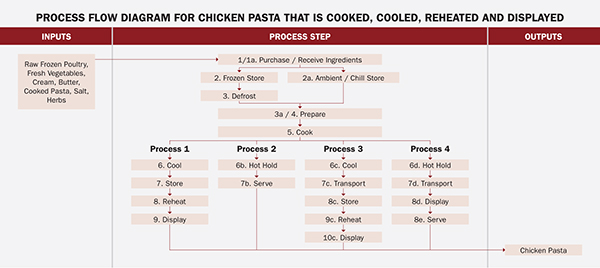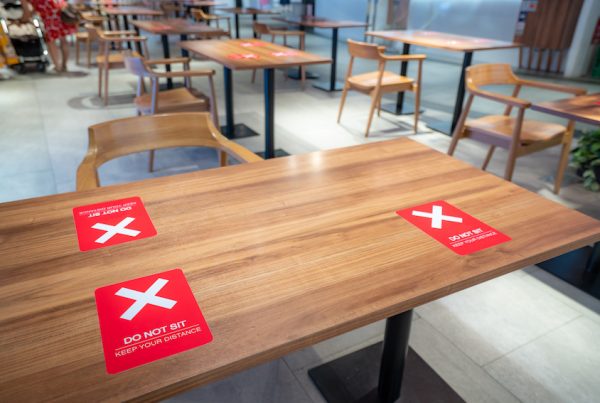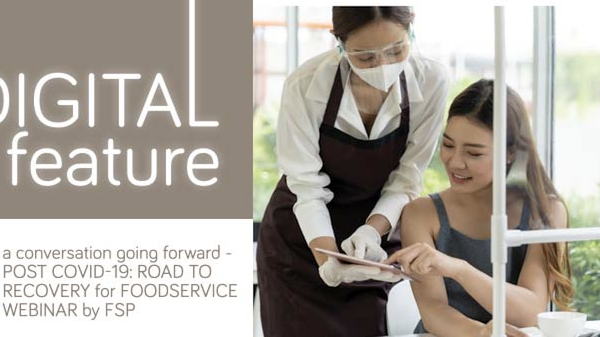Tainted food incidents are rather common. According to an April 2013 study from FoodSentry.org, a group that tracks the industry, “Nearly 1,000 reported incidents regarding foods from 73 countries over the past year demonstrate the global nature of risks to our foods.” From this example, it is evident that SOPs are vital to quality assurance & credibility of your products, not to mention your reputation.
Newer issues that have emerged in the food industry are Food Fraud, in light of the fake food epidemic that has plagued the modern world. In 2014, the Global Food Safety Initiative (GFSI) announced their plan to include Food Fraud in their Food Safety Management System, with a scope that includes adulteration (specifically dilution, substitution, concealment, unapproved enhancements), mislabelling, smuggling, theft & counterfeiting, which, left unchecked, can pose grave dangers to the public.
As a food business operator, you can be vulnerable to such issues, so best to keep vigilant & be aware about it, as well as devise appropriate SOPs in your supply chain to minimise risks. Your staff also need to be kept informed about these possibilities, which brings us to the vital benefits of training when it comes to SOPs.
SOPs can serve as an effective program for employee training as well as a tool for coaching & development. SOPs also help to identify control points, as well as their limits to monitor & validate the process. Corrective & preventive actions can be identified to address issues. Essentially, your SOPs are your control mechanisms, because the more you trial & error your processes, document them & keep your staff informed, the more control you have over your output over time.
In short, SOPs will help you, the owner, in establishing time, labour & material requirements for a job or task, & serve as a checklist for internal audits.

SOP AND HACCP GO HAND IN HAND
According to Tim Lombardo, lead staff scientist, microbiological and food safety consulting of Covance Food Solutions, Wisconsin, SOPs have been in place in the food industry for many years.
“I believe that since the advent of HACCP, SOPs have become more formalised and expansive. What was once a simple guideline or verbal instruction has evolved into a detailed work document,” he shared.
Lombardo opines that the origins of SOPs are from the advent of HACCP and then expanded in part, in response to federal regulations. Having said that, he also sees a link between the birth of fast food restaurants and the origins of SOPs, as chain restaurants have been responsible for the increase in detail and scope that we now see in many food-related SOPs.
With the growth of chain restaurants, there has been an increase in pre-prepared and manufactured foods, rather than made-from-scratch foods in the restaurant. There are many reasons for this, including the desire to have consistency in food purchased from restaurantto- restaurant. Food manufacturers make the food to a specification, in accordance with a host of SOPs. The restaurants in turn, prepare the food (instead of cook), in accordance with their own procedures.
Implementing HACCP in your restaurant is not only good for quality assurance, but is also helpful in bolstering confidence to your customers. HACCP looks at the internal processes, while the ISO 22000 is about the entire food chain management, including for instance, where the fish that you ordered from your regular supplier came from.
ISO 22000 is a Food Safety Management System that can be applied to any organization in the food chain, from farm to fork. Becoming certified with ISO 22000 allows a company to show their customers that they have a food safety management system in place.
It can’t hurt to reassure your customers that they are eating somewhere safe, clean and hygienic.
FOCUS ON THE FOUR PILLARS
While the details of the SOPs may differ between the types of food service businesses, the content and focus on food safety should be the same. The emphasis on food safety is vital because food can be contaminated very easily if one doesn’t follow proper procedures.
Setting up your SOP doesn’t have to be a complete nightmare. Besides identifying your needs, which will differ according to the kind of F&B establishment you have, there are certain things that you can keep in mind and which should be prioritised.
Lombardo stresses that F&B operators should focus on these four pillars to address in any SOP: Quality, Cleanliness, Personal Safety and Food Safety. In addition to cleanliness, relevant food safety SOPs include at a minimum: equipment inspections, temperature controls, storage of food, materials and cleaning supplies, allergen management and control, removal of waste and last but not least, personal hygiene.
RULES AND REGULATIONS APPLY
Depending on where you are based, federal regulations will vary, but there will invariably be at least one or two clauses on food safety in restaurants that must be complied with. In Malaysia, there is a mandatory course conducted by the Ministry of Health to ensure that F&B establishments are aware of the concept of food safety.
Below is a list of regulations that you can consult to ensure that your establishment is up to date in this department:
Malaysian Standards:
- MS 1480:2007 Food safety according to HACCP
- MS 1514: 2009 Good Manufacturing Practices (GMP)
- Equivalent: Codex Food Hygiene Basic Text, Rev. 2003
Others:
- ISO 22000: 2005 Food Safety Mgt Systems – Requirements for any organization in the food chain
- USFDA cGMP Regulations & specific HACCP regulations
- EU – legislations on Hygiene of Foodstuff, and specifics for different food products
PRE-REQUISITES TO HACCP
- Establishment is legal – food premises must be registered
- Operate according to relevant by-laws
- Products comply with appropriate regulatory requirements such as: Food Act 1983: Food Regulations 1985; Food Hygiene 2009; etc. mandatory codes of hygienic practice
- Products comply with: customer/importer requirements
Lombardo mentions that while the new US FDA food regulations apply to food manufacturing, processing and storage, there are a great deal of learnings and tools that can be incorporated into a restaurant’s food safety protocols. In the US, these include supply chain and allergen management requirements detailed in 21 CFR 117, as well as sanitation requirements detailed in both 9 CFR 416 and 21 CFR 117.
The FDA just released a Listeria Guidance for Ready-to- Eat Areas in Food Manufacturing. Restaurants should consider a review of all these regulations and incorporate any of the relevant requirements. You can check with your local council or food industry-related associations for more information.
POSSIBLE PITFALLS IN SOPS
SOPs are generally written by Subject Matter Experts – people who have greater understanding of the task and how it relates to overall food safety. Generally speaking, the authors tend to write their SOPs at a higher level than those doing the work.
Therefore it is very important that the SOP be written for the reader and not the author. This will go a long way in facilitating understanding by the employee performing the tasks.
SOPs are easy to overlook because you may think that your chef and staff are well-trained and know your operations in and out. However, do keep in mind that there is high turnover in any kitchen, therefore, even if you don’t see the need for taking the time to build an SOP manual, it will not go to waste, rest assured. That manual can be used as a training tool for new employees. A less complicated task or job may require a less complicated SOP but there is still a need to have a SOP nonetheless.
Re-Look, Re-Do, Re-Visi
Taking stock of your SOP in the kitchen can minimise errors and possibly enable your staff, as well as yourself as the owner and operator. It can’t hurt to re-visit your processes from time to time and to bear in mind that SOPs are live documents that are constantly changing.
You would be curious by now about the different kinds of SOP, we hope? Take a look at the next article!
Note of Thanks
Much gratitude goes to Tim Lombardo, food scientist and consultant for his vital contributions to this article.
Tim Lombardo has 25 years of food manufacturing experience, including over 15 years in manufacturing plants and 5 years in corporate office, under his belt. As the Lead Staff Scientist of Covance Food Solutions, he is responsible for food safety consulting services in all areas of food manufacturing from dairy, to pet food. He is also a certified International HACCP Alliance Lead Instructor, Food Safety Preventive Controls Lead Instructor (Human Food) as well as a registered SQF Consultant under the Global Food Safety Initiative (GFSI).
Sources:
International Business Times: http://www.ibtimes.com/foodtainted-pesticide-sickens-hundreds-japan-these-5-countries-top-listglobal-food-1531750
Jabatan Standard Malaysia: http://www.jsm.gov.my/documents/10180/254331/Pre-Requisite+Programs+%28PRP%29%20%26%20Critical+Control+Points+%28CCP%29.pdf/fcd8e0db-304e-48c8-84d6-43cee45f2b35
Michigan State University: http://foodfraud.msuedu/2014/05/08/gfsi-direction-on-food-fraud-and-vulnerability-assessment-vaccp/
Food Safety Training Inspection Course in Malaysia http://fsq.moh.gov.my/v5/ms/category/perkhidmatan/ifstc/
Food Safety Magazine: https://www.foodsafetymagazine.com/magazine-archive1/december-2013january-2014/food-plant-sopsthe-backbone-of-your-food-safety-system/?EMID










